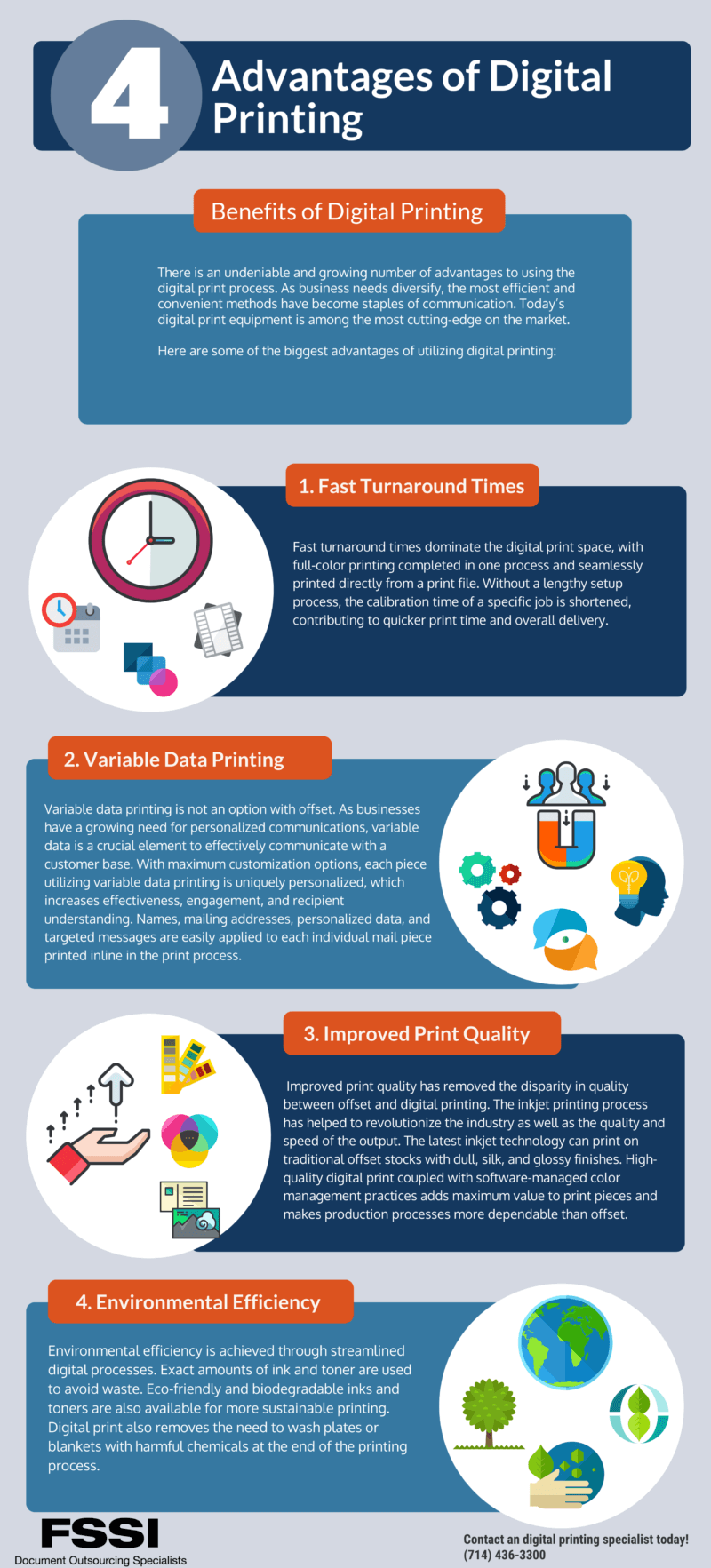Our Digital Printing Statements
Our Digital Printing Statements
Blog Article
All about Digital Printing
Table of ContentsDigital Printing Things To Know Before You BuyGet This Report about Digital PrintingWhat Does Digital Printing Do?Digital Printing - An OverviewThe Ultimate Guide To Digital PrintingThe Buzz on Digital Printing
Variable information printing, such as direct mail with individualized codes and addresses, is ideally fit for electronic printing. Digital quick printing just needs four actions of design, testimonial, printing and binding to get whatever done. Digital quick printing has an exceptional benefit: print on demand.According to PMMI, digital printing enables brand names and makers to react quickly to customer demands while enhancing the supply chain, lowering warehousing price and waste, and enjoying faster time to market. That all audios terrific, however exactly how does this technology do all that? The significant differentiator of these technologies is that there are no set up costs and no plates with digital printing.
Not known Details About Digital Printing
According to Wikipedia, the best distinction in between digital printing and typical techniques such as lithography, flexography, gravure, or letterpress - Digital Printing is that there is no requirement to change printing plates in electronic printing, whereas in these analog printing approaches the plates are repeatedly changed. This leads to quicker turnaround time and reduces cost when using electronic printing.
Speedy production suggests obtaining your item to market faster. It likewise indicates it's simpler and faster to make adjustments later on, when you alter a recipe, add a SKU, or create seasonal product packaging. Digital printing is extremely versatile, so it's simple to make adjustments to the bundle layout quickly. Everything goes back to home plates.
With standard printing approaches, short-run printing is just not feasible. Due to the fact that a terrific style can make or damage your item, electronic printing continually develops top notch, clear and colorful graphics each time.
Digital printing is the process of printing digital-based images directly onto a variety of media substrates. There is no demand for a printing plate, unlike with countered printing. Digital files such as PDFs or desktop posting data can be sent straight to the digital printing press to print theoretically, photo paper, canvas, material, synthetics, cardstock and other substrates.
A Biased View of Digital Printing
According to PMMI, digital printing enables brands and suppliers to react swiftly to customer needs while improving the supply chain, reducing warehousing price and waste, and taking pleasure in faster time to market. That all sounds great, but exactly how does this technology do all that? The significant differentiator of these innovations is that there are no set-up charges and no plates with electronic printing.
According to Wikipedia, the biggest go to this site distinction between electronic printing and traditional techniques such as lithography, flexography, gravure, or letterpress is that there is no need to change printing plates in electronic printing, whereas in these analog printing methods the plates are continuously changed. This results in quicker turnaround time and reduces cost when utilizing electronic printing.

6 Simple Techniques For Digital Printing
With traditional printing approaches, short-run printing is simply not feasible. Due to the fact that a fantastic design can make or break your product, electronic printing constantly produces top notch, clear and vibrant graphics each time.

According to PMMI, digital printing permits brands and producers to respond quickly to client needs while improving the supply chain, decreasing warehousing cost and waste, and appreciating faster time to market. That all sounds terrific, however exactly how does this modern technology do all that? The significant differentiator of these innovations is that there are no set up charges and no plates with electronic printing.
What Does Digital Printing Do?
According to Wikipedia, the best distinction between electronic printing and traditional methods such as lithography, flexography, gravure, or letterpress is that there is no requirement to replace printing plates in electronic printing, whereas in these analog printing approaches home plates are continuously replaced. This leads to quicker turn-around time and reduces price when using digital get more printing.
Digital printing is extremely flexible, so it's simple to make modifications to the plan layout swiftly. It all goes back to the plates.

The 6-Second Trick For Digital Printing
Digital printing is the process of printing digital-based photos straight onto a range of media substrates. There is no requirement for a printing plate, unlike with offset printing. Digital data such as PDFs or desktop computer publishing data can be sent out straight to the digital printing machine to print on paper, photo paper, canvas, textile, synthetics, cardstock and other substrates.
Report this page